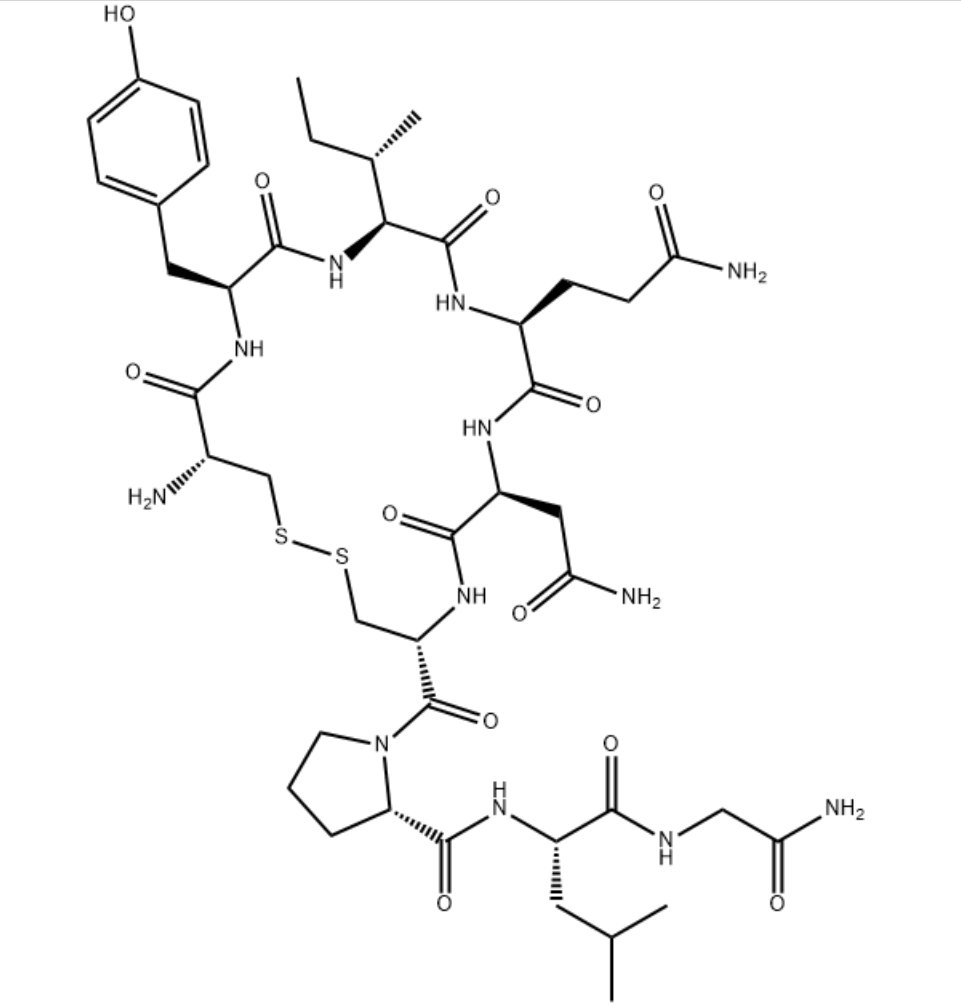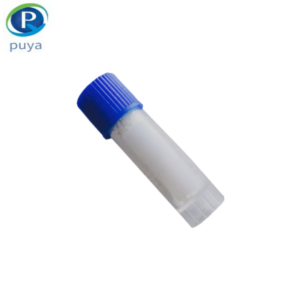Oxytocin (α-Hypophamine; Oxytocic hormone) CAS 50-56-6 is a pleiotropic hypothalamic peptide that contributes to childbirth, lactation, and pro-social behavior
Product Name: Oxytocin
Synonyms: (1-hemicystine)-oxytocin;3-isoleucine-8-leucinevasopressin;atonino;cyclic(1-6)-di///;di-sipidin;endopituitrina;glycinamide,l-cysteinyl-l-tyrosyl-l-isoleucyl-l-glutaminyl-l-asparaginyl-l-cys;nobitocins
CAS: 50-56-6
MF: C43H66N12O12S2
MW: 1007.19
EINECS: 200-048-4
Product Categories: Amino Acid Derivatives;Organics;Amino Acids 13C, 2H, 15N;Peptide;Amino Acids & Derivatives;Intermediates & Fine Chemicals;Pharmaceuticals;Vasopressin and Oxytocin receptor;Peptide Receptors;hormones;peptides for birth-giving use;Veterinary drugs
Mol File: 50-56-6.mol
Oxytocin (OT) is a type of uterine contraction drug and can be derived from the animal posterior pituitary or chemically synthesized.
Oxytocin is a uterine contraction drug that is mostly used in late pregnancy induction and stagnant birth due to weak uterine contractions. Suitable for inducing labor and alleviating pain. Commonly used with ergot preparations to be used in inducing labor, expediting labor, and in uterine bleeding due to weak uterine contractions following birth or still birth. Nose drops can be used to promote lactation.
Oxytocin CAS 50-56-6 Chemical Properties
Oxytocin Chemical Properties
Melting point 192-194°C
alpha D22 -26.2° (c = 0.53)
density 1.1086 (rough estimate)
refractive index 1.6700 (estimate)
storage temp. 2-8°C
solubility Very soluble in water. It dissolves in dilute solutions of acetic acid and of ethanol (96 per cent).
form lyophilized powder
pka pKa ~6.1(free amino group on Cys) (Occasionally);~10(free phenol on Tyr) (Occasionally)
color White
Water Solubility Soluble in water.
Merck 13,7049
BRN 3586108
InChIKey DSZOEVVLZMNAEH-BXUJZNQYSA-N
CAS DataBase Reference 50-56-6(CAS DataBase Reference)
Uses of Oxytocin CAS 50-56-6
1.Oxytocin is the principal uterus-contracting and lactation-stimulating hormone of the posterior pituitary gland.
2. Oxytocin is a nonapeptide hormone primarily synthesized in magnocellular neurons of the paraventricular and supraoptic nuclei of the hypothalamus. It is known best for its role in stimulating uterine contraction and lactation and is important for social memory and attachment, sexual and maternal behavior, and aggression. Also, it has been implicated in various non-social behaviors, including learning, anxiety, feeding, and pain perception.






Reviews
There are no reviews yet.